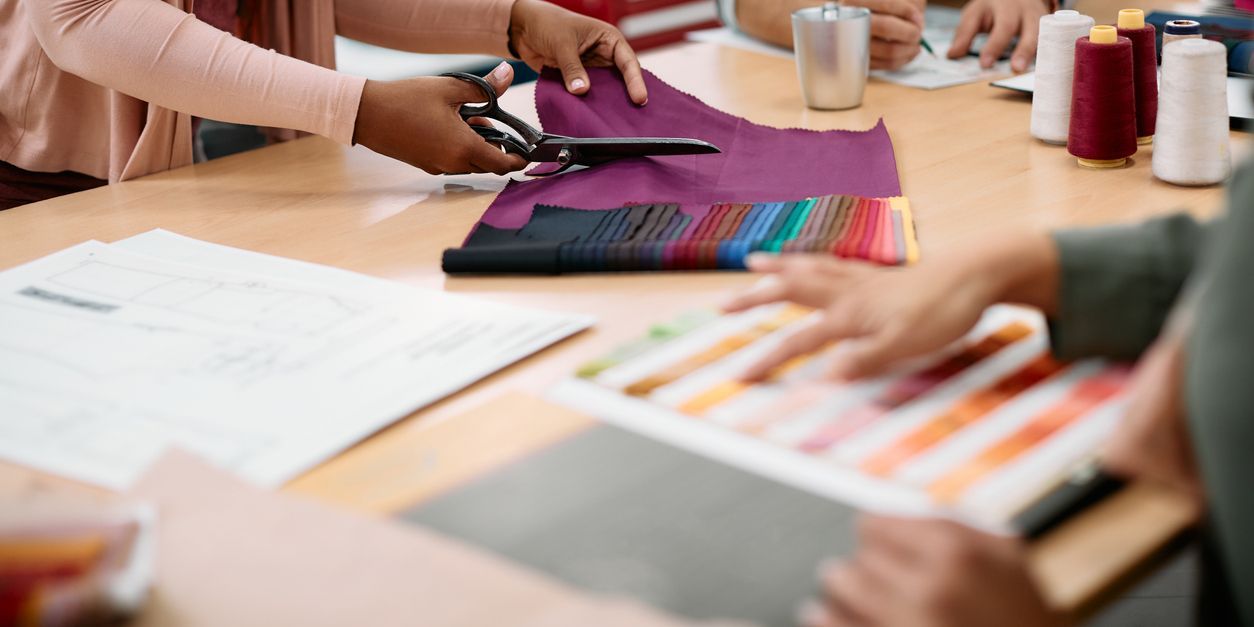What is a Textile Designer?
A textile designer creates patterns and designs for fabrics used in clothing, home décor, and other products. These designs can be printed, woven, or knitted into materials like cotton, silk, or synthetic blends. Textile designers often start with a sketch or digital image and use special software or tools to bring their ideas to life on fabric.
These designers need to think about both how the fabric will look and how it will feel or function. For example, a fabric for a summer dress might need to be light and breathable, while upholstery fabric needs to be strong and durable. Textile designers work closely with manufacturers to make sure their designs can be reproduced on a large scale while keeping the quality and appearance consistent.
What does a Textile Designer do?
 Duties and Responsibilities
Duties and Responsibilities
The duties and responsibilities of a textile designer involve both creative and technical tasks to develop appealing and functional fabric designs. Here are some common responsibilities:
- Concept Development: Textile designers research trends, materials, and colors to create original design ideas. They may draw inspiration from nature, art, fashion, or cultural elements to guide their creative process.
- Design Creation: Using hand sketches or digital software, they develop patterns, prints, and textures for use on various types of fabric. These designs must consider both visual appeal and how the pattern will repeat or align on the material.
- Material and Technique Selection: Designers choose appropriate fabrics and production methods—such as weaving, knitting, or printing—that best suit their design and intended product use.
- Collaboration with Manufacturers: Textile designers work closely with production teams to ensure their designs can be produced efficiently and at the right scale. They may adjust colors, sizes, or layout for technical accuracy.
- Sample Development and Testing: They often create prototypes or samples and evaluate how the design looks and performs on actual fabric. This may include checking for durability, colorfastness, or print quality.
- Client and Team Communication: Many textile designers present their ideas to clients, creative directors, or other departments. They revise designs based on feedback and work within deadlines and budget constraints.
Types of Textile Designers
Textile designers can specialize in different areas depending on the materials they work with and the industries they serve. Here are some common types of textile designers:
- Printed Textile Designers: These designers focus on creating surface patterns and prints, which are applied to fabrics using techniques like screen printing, digital printing, or block printing. Their work is common in fashion and interior textiles.
- Woven Textile Designers: Specializing in creating designs through weaving, these designers work with patterns formed by interlacing threads. They often develop textiles for clothing, upholstery, or industrial uses, considering both function and style.
- Knit Textile Designers: These designers create fabrics by knitting yarns into patterns and textures. Knit designs are widely used in garments, especially in sportswear and casual fashion, as well as in home textiles.
- Interior Textile Designers: Focused on home furnishings, these designers create fabrics for curtains, upholstery, rugs, and other decor items. They often prioritize durability, texture, and color coordination for interior spaces.
- Technical Textile Designers: Working in industries like automotive, aerospace, or healthcare, these designers develop high-performance fabrics with specific functions, such as waterproofing, fire resistance, or breathability.
- Fashion Textile Designers: These designers create fabric designs specifically for clothing collections, often collaborating with fashion designers to match the overall aesthetic and trends of a brand or season.
Textile designers have distinct personalities. Think you might match up? Take the free career test to find out if textile designer is one of your top career matches. Take the free test now Learn more about the career test
What is the workplace of a Textile Designer like?
The workplace of a textile designer can vary depending on the industry they work in. Many textile designers work in design studios or offices, where they sketch patterns, develop concepts, and use design software to create fabric designs. These spaces are often collaborative, where designers work closely with other creatives like fashion designers, product developers, and marketers.
Some textile designers also spend time in manufacturing settings or production facilities. In these environments, they may work with technicians to ensure that their designs are accurately produced on fabrics, using processes like weaving, knitting, or printing. Understanding how patterns translate from digital designs to physical materials is an important part of their job in these settings.
Others may work independently or freelance, managing their own schedules and working from home or shared creative spaces. Freelance textile designers often take on projects for fashion brands, home decor companies, or product manufacturers.